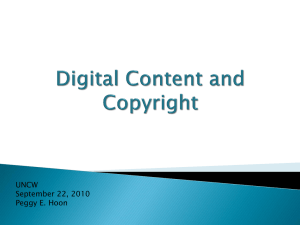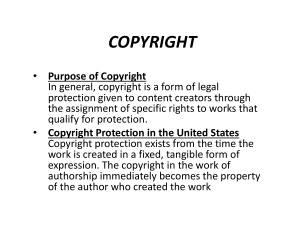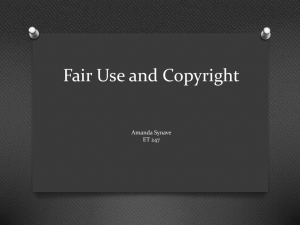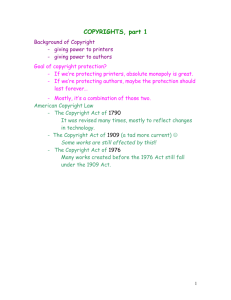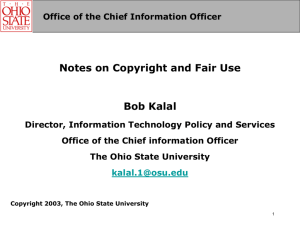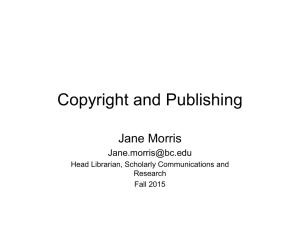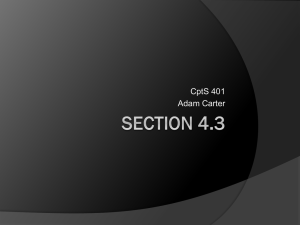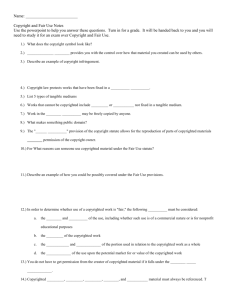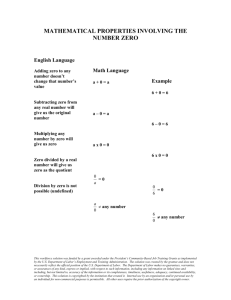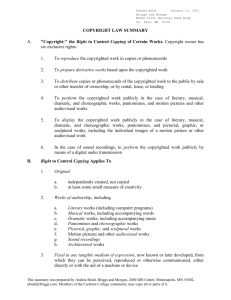Information Ethics
advertisement
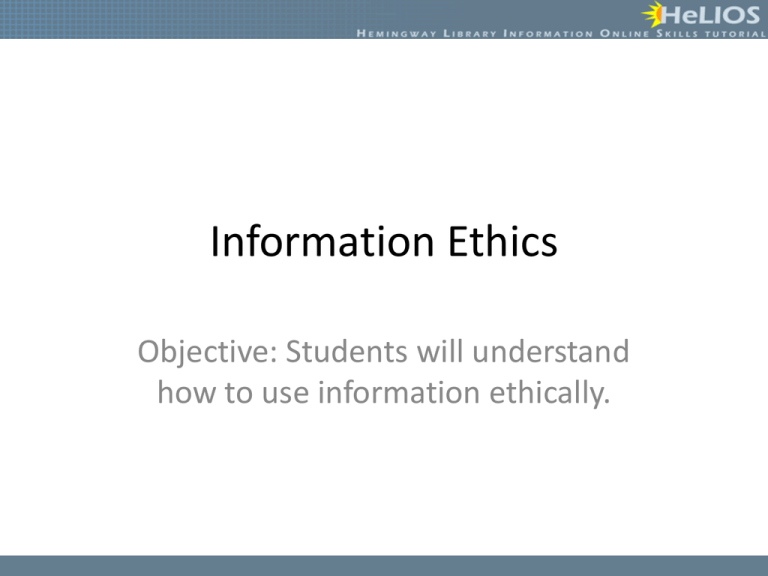
Information Ethics Objective: Students will understand how to use information ethically. Information Ethics Using information in an ethical manner means: – Avoiding plagiarism – Giving credit to the original authors – Using information appropriately and legally (copyright law) Using Information Appropriately The Fair Use section of the Copyright Law allows you to use copyrighted material without permission based on the following four factors provided in the law: 1) purpose and character of the use 2) nature of the work 3) amount and substantiality of the portion 4) effect of the use upon the potential market Purpose of the Use When using a copyrighted work you need to think about the purpose. Are you using it in a similar way or is the way you are using it new and unique? If it is unique, it is more likely to be fair use. Example: You can use the structure of someone else’s web site to create a new web site with different information. Character of the Use This statement refers to whether the use is commercial or noncommercial. If it is for noncommercial use, it is more likely to be considered fair use. Example: You could use a picture from a book in a classroom presentation at school. Nature of the work A particular use is more likely to be considered fair when the copied work is based on fact versus used in a creative sense. The nature of the use is also dependent on whether the item has been published. Example: A teacher must get a student’s permission to use the student’s research paper as an example for another class. If the paper has been published, the faculty member could use the paper without getting permission from the student, as long as he cited the source. Amount and substantiality of the portion used This statement refers to how much of the copyrighted work is used. If just a small section is used, the law favors fair use. Less than 10% of a written work can be used if the item is not divided into chapters or sections. If it has chapters, only one chapter or 10% of the work can be used whichever is lower. Substantiality refers to the heart of the work. If the major part of the work is copied, it may not be fair use. Example: You could quote a section of a chapter in a book to provide a catchy introduction for your research paper. The effect of the use upon the potential market for or value of the copyrighted work This statement refers to how you are using the copyrighted information. If you are using it for commercial purposes, its use may not be fair. Or, if you are copying something that affects someone else profit margin, its use may not be fair. Example: Your teacher cannot create a course pack that has several copyrighted articles. He/She must have copyright permissions paid before the course pack can be created and sold to you. Digital Copyright Now that information is so easily transferred electronically, it has become commonplace to copy and share files. Is this okay? No, the copyright law still applies to electronic information. Digital Copyright Although many students trade copyrighted works using file-sharing programs, this may be a violation of copyright law. You may be prosecuted or have to pay a fine if you violate the law. What You Can Do • You can: – Quote from books/articles/websites – Use images in papers/presentations – Use small sections of books for presentations What You Can’t Do • You cannot: – make whole copies of workbooks designed as consumables to avoid purchasing new copies – extract large sections of a copyrighted book and re-sell it on the internet or in print without getting permission – post a song or movie on the internet to help others avoid the cost of purchasing their own copy. Summing Up • Using information ethically means: – Giving credit to the original author when using his/her work – Not posting the work of others on your own website without getting permission – Not sharing music, video, and software files with others who haven’t paid for them – Keeping in mind all four aspects of Fair Use 1) 2) 3) 4) purpose and character of the use nature of the work amount and substantiality of the portion effect of the use upon the potential market

